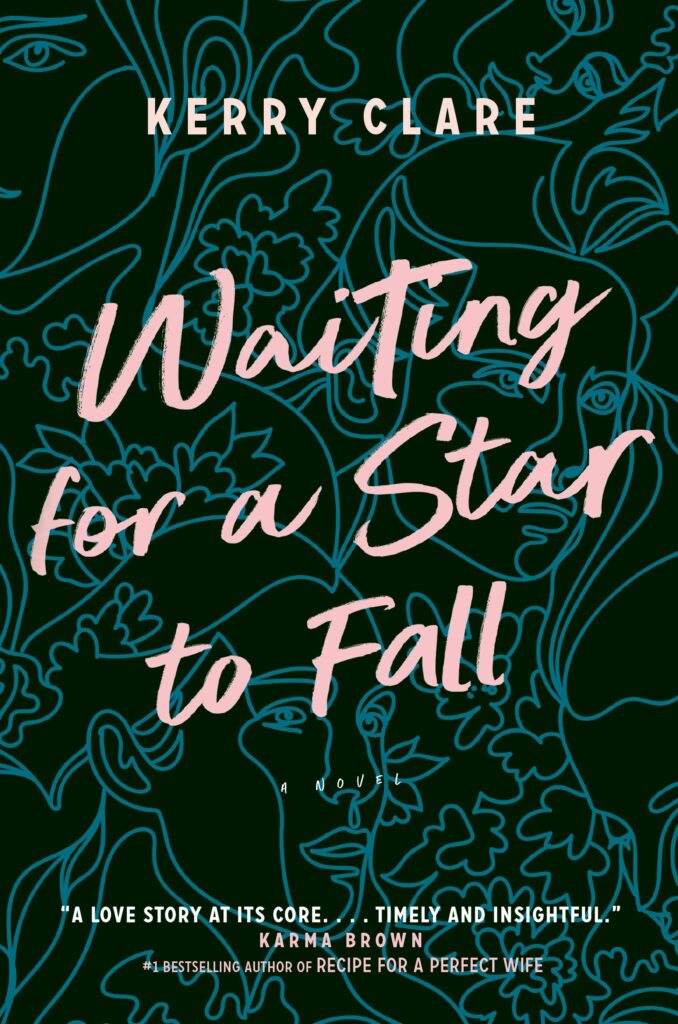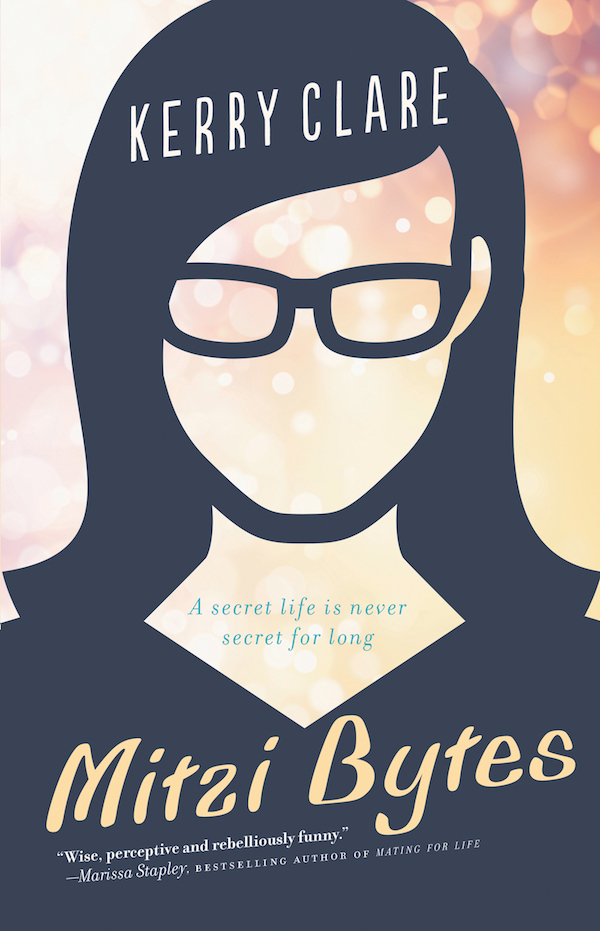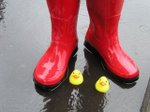November 12, 2009
There is no excuse
There is no excuse for the accompanying photo, except that my baby is adorable. Alright then, bookishly. I thumbed through the new Pierre Trudeau biography the other day, and now I am afraid I’m the only woman in Canada who never slept with him. He didn’t even want me to live with him and have his child, like Liona Boyd (who is Liona Boyd?) on the cover of Hello. This may or may not be unfortunate. I just finished reading What Boys Like by Amy Jones (review forthcoming!) and have just started Mother Knows Best: Talking Back to the “Experts”. Patricia has directed my attention to what seems to be the worst picture book ever: The Mischievous Mom at the Art Gallery by “high-octane duo” Rebecca Eckler and Erica Ehm. A new level of narcissism— we have to be reflected in our kids’ books now? “Finally — a picture book for the Starbucks-armed, BlackBerry-checking, gym-going working mother.” Perhaps you’re meant to read it on the treadmill. Chapters/Indigo includes a “Green Matters” option on its online catalogue, narrowing searches to books printed on FSC/Recycled Content. On the best Sesame Street songs (in honour of the show’s fortieth birthday). They forgot ladybug picnic. Charlotte on The Children’s Storefront, a neighbourhood institution that was lost in a fire last week. Rona Maynard’s secrets to decades upon decades of marriage. I’ve been enjoying books/music site Sasquatch Radio. WriterGuy directed me towards the interesting “How Waterstones killed bookselling” (in light of my recent post about how Waterstones killed book buying, for me, at least). And I’m wondering if I’m the only one who starts carrying around my next book to be read once the current read is down to the last fifty pages or so. Indeed, if I don’t have something fabulous to read within arm’s length at all times, I do start to get a little nervous.
November 6, 2009
The Defiant Ones
Big thanks to the reader who pointed me towards “The Defiant Ones: Children’s books, parents and discipline” in The New Yorker. What do books including Ian Falconer’s Olivia Series, David Shannon’s No David, and Mem Fox’s Harriet, You’ll Drive Me Wild tell us about the current state of child-rearing? That apparently, parents are powerless, and kids are adorably manipulative. Admittedly, I think, this is a limited prism through which to view these books, but the article is still pretty fascinating. Recapped here, in blog form, with a slide show, oh my!
Oh, and Olivia. I really desperately admire that pig, and think that any little girl would do well to take on more than a few of her personality traits, except for any little girl that I’d have to live with, of course.
October 29, 2009
Its own mythology
“Every family in which children are read to, and where books are part of the furniture and the reading of them part of life, must have its own mythology, one that has arisen out of early books. Characters become companions, they help form the imagination, they people a child’s inner landscape. Alice in Wonderland and the White Rabbit, the Red Queen and the Caterpillar were far more to me than invented characters in a storybook. They still are. Looking at the children’s picture books now, I realize that they are my books too, they became as much part of my inner landscape as of theirs.”– from Howards End is on the Landing by Susan Hill
October 12, 2009
On Before Green Gables
It was an enjoyable and fascinating experience to finally read Before Green Gables, the Anne of Green Gables prequel written by Budge Wilson, published last year. Budge Wilson was an author I particularly loved when I was young– the Lorinda Dauphinee stories, including A House Far From Home, The Best/Worst Christmas Present Ever, and Thirteen Never Changes. She certainly had a formidable task set before her, to write the Green Gables book. And I began reading prepared for disappointment (after all, I’d once read Scarlett by Alexandra Ripley), but found myself enjoying it after all. There is nothing disappointing about this book itself.
But. Of course. I think what is disappointing is the entire exercise, and its execution. I’m not sure why we needed a “prequel” anyway, and then to have it written by a children’s author is rather incongruous with the original material. Because Before Green Gables is distinctly a children’s book– this is what Budge Wilson does, after all. In fact, it’s basically a pared-down version of Anne of Green Gables itself, as Anne– from the age of three or four– begins to entrance all who meet her (including her alcoholic wife-beating foster father), conjure magic in unlikely places, and spin the world into something delightful. And of course part of this is her nature, but Wilson has her nurtured too– her guardians display moments of genuine goodness, she meets a surfeit of generous, spirited school teachers along the way, she learns about poetry from her foster-sister who is uncannily Anne-like herself, she meets good friends, people look out for her, and not one heart here is not warmed at one time or another.
The thing is, however, that Anne of Green Gables was not a children’s book, or was not distinctly so. And however much all of the above events also came to pass in the original novel, where they achieved their poignancy is from the awfulness of Anne’s early life. The specifics are never made particularly clear, but such silence is telling– there is a reason Anne’s story began in Bright River. I believe Marilla Cuthbert alludes to this at some point, the unspeakableness of Anne’s early history, what she might have witnessed and been subject to in the homes where she spent that part of her life. Anne is who she is, not because of kindness she met along the way, but because of sheer lack of it. Her Anne-ness is primarily a survival mechanism in a brutal world where she was completely, utterly and scarily alone.
Her life from Green Gables was indeed a kind of fairy tale, but how dark is a fairy tale at its root, after all?
Budge Wilson has written a wonderful children’s book, but a children’s book doesn’t do Montgomery’s own work justice– or at least this one doesn’t. Because there is only light here, and Anne becomes a caricature. Before Green Gables also suffers from being so unorganic, where it is obvious that the narrative was always a means to an end and not the end itself. But what’s missing most of all is the subliminal, what’s left unsaid, all those aspects of the narrative that fly over kids’ heads leaving them sensing something there, and loving the story all the more.
Montgomery’s work was full of that stuff, which is why we return to her again and again.
October 6, 2009
Little Women Report #2
Perhaps I spoke too soon awhile back, because the second half of Little Woman was really wonderful. Though the characters were good, they were good in ways that were true to themselves and the ways in which they strayed beforehand weren’t necessarily obvious and were interesting to read. The chapter where Meg makes jelly that doesn’t set on the day her husband brings home a dinner guest without warning was an incredibly realistic depiction of domestic dynamics. Jo’s experiences as a writer were fascinating and so true. Amy became a wonderful mass of contradictions, and the most interesting sister by the end. I really enjoyed this part of the book and am glad I followed through.
But the second half was so different from the first that I could scarcely believe that the two were published a year apart. I’d figured Alcott must have grown significantly as a writer in the interim. Or perhaps she realized her characters had wider appeal than she’d initially planned?
It’s the tone of the second half that is so very different, as though it’s growing up along with the characters. And that’s something I’ve never found in a book before, an omniscient narrator so in tune with her characters’ perspectives. In the first half of Little Women, there is little going on beneath the surface. Of course, you get the sense that Marmee is wiser than she lets on, but it’s so obvious, and the other characters know it too. But it was distinctly a children’s book, whereas the second half wasn’t.
And maybe that’s what young readers like so much about Little Women, that they begin with something quite geared towards their level but the book takes off on its own speed, and by the end the narrative is quite above them. So that it would be a book one would revisit time and again, to find out what has changed since the last time.
Note: I was so glad that Jo didn’t marry Laurie. The Professor is so lovely, however much German and old. Obviously, Jo hadn’t watched enough Sex and the City to be brainwashed into thinking enacting adolescent drama is an aspiration more worthy than mere happiness.
September 30, 2009
Reporting from the reading road
So I’m halfway through Little Women, just beginning Part Two and Meg’s wedding. And what I do remember now from the first time I read this is that I was unbelievably confused about who Teddy and Laurie were, and only now do I realize that they were both Theodore Laurence. (And somehow I was also confusing him with Teddy Kent from Emily of New Moon, but that’s neither here nor is it there). In general, I’m not finding the book too rip-roaring, and am looking hungrily to my to-be-read stack and counting the number of pages left (250). But the experience is not without its joys: though the characters are types, they’re also more than a bit surprising, and Jo is as entrancing as Jo’s ever were. (Beth, however, I probably will not mourn so much when it’s time.) Regarding the types: remember Sarah Liss on Little Women as the original Sex and the City? I also absolutely love the self-consciously omniscient narrator.
It strikes me, however, that this is a children’s book in a way that anything penned by L.M. Montgomery is not. I’m revisiting this for the first time since girlhood, and I’m not finding anything new between the lines, unlike when I last reread Anne of Green Gables and discovered the heart of the story is actually Marilla. Also, Little Women is a bit too moralistic, which I realize is the whole point, but it’s sort of retchful, no? I know the girls don’t always manage to be good, but they’re always trying to, and Marmee is so frightfully good (because she’s suppressed her terrible temper) and I just feel as though the March family loves one another a little too much in order to compensate for… something.
So, is this sacrilege? What am I missing? Is this a book one has to fall in love with in childhood? Any illumination would be quite welcome.
UPDATE: Part Two has actually proved to be much more interesting. “Literary Lessons” (Jo’s adventures in publishing) laid out very clearly the confusing nature of writing feedback. And “Domestic Experiences” (where Meg and Brooke’s household descends into chaos when jelly fails to set is funny, poignant, and real). And even Amy’s failed posh fete. I am enjoying it more.
September 14, 2009
Pirates and Penguins, oh my!
Yesterday, our wee family attended the launch of Patricia Storms‘ book The Pirate and the Penguin at the magnificent Yorkville Public Library. It was not actually Harriet’s first literary event, as she’d attended Coach House Press’s Wayzgoose Party the week before, but it was her first launch, and the first time she’d sat down for a public reading. She was spoiled by Patricia, I think, who had an actual pirate on hand for the occasion, and was kind enough to pose for a picture with us. Her reading was excellent, and held even Harriet’s three and a half month-old attention span. Afterwards, Stuart and I had shared a slice of cake, which Harriet inadvertantly stuck her hand in.
We loved the book, from each one of its delightful map-illustrated inside covers to the other. Now, I’ve never really *got* pirates myself, except Somali ones– I don’t understand why International Talk Like a Pirate Day is funny, for example. But I’ve been a big fan of penguins going back yonks, and I like alliteration at the best of times. The story was funny, and sweet, and I especially liked its references to knitting and yoga. Patricia has been illustrating really wonderful books for a long time, and we’re so excited that she’s finally written her own!
September 13, 2009
Worst Nursery Rhyme Ever
My friend Kate gave us a gorgeous Mother Goose collection when Harriet was born, and Stuart and I have been happily reacquainting ourselves with the rhymes since then. And Mem Fox does prescribe at least five nursery rhymes per day (“Begin on the day they are born. I am very serious about this: at least three stories and five nursery rhymes a day, if not more, and not only at bedtime, either”) so we’ve been following her recommended dosages, and then some. We ended up receiving another collection used from our neighbours, and so now we’ve got Mother Goose for upstairs and down. And how wonderful, to discover these rhymes with their words and rhythms, and to realize we’ve known them all along, stored somewhere in the back of our minds but coming back to us just like that.
“Hey Diddle Diddle” is Harriet’s favourite, we’ve decided, because it was the first nursery rhyme she ever heard (on her second day in the world, when we walked part way down the hall in the hospital, and stopped at the “Hey Diddle Diddle” mural, because I could go no further).
But we hate “Bat Bat”. Neither Stuart nor I had heard it before, and when we found it in the first collection, we thought maybe the editor’s son had written it, and they’d included it to be nice. Because it was a load of crap. But it’s in our second book too, so it must be real:
Bat bat come under my hat
and I’ll give you a slice of bacon
and when I bake
I’ll give you cake
if I am not mistaken.
We’re going to start skipping this one, so not to put Harriet off nursery rhymes altogether. They’re all a bit goofy, but “Bat Bat” is idiotic: why would you want a bat under your hat? And would one be enticed by a slice of bacon? Who’d entice a bat? Do bats eat cake? And doesn’t all of this suggest the narrator is indeed mistaken? Nonsense is one thing, but stupid is another.
Worst Nursery Rhyme Ever.
September 6, 2009
Springing
I’ve been disappointed by quite a few books lately, which might be because reading doesn’t come so easy these days, ever since breastfeeding got convenient and doesn’t take up my whole life. So a book has really got to be worth my while, seeing as “so little time” has never been more true. I also continue to put books on hold at the library, and have about thirty books waiting to be read on my shelf. All this to say that I’ve got reservations on springing for a hardcover, but I still think I’m going to buy A Gate at the Stairs by Lorrie Moore, because Lisa Moore’s review made me hungry to read it.
In other acquisitions news, today I bought Harriet Old Possum’s Book of Practical Cats.
August 28, 2009
Books for tactility
Of course, the point of books is exploration, and it was very exciting to see Harriet realizing that this morning. I’ve been helping her “read” her touch and feel books for a while now, but this morning she reached out and did it herself. I read to her all the time, and she seems to listen, and she looks at the pictures, but this was the first active response she’s ever shown to a book, and it made me very happy. Books are for touching indeed, and soon they’ll be for eating, and one day you’ll be reading and have the world in your hands.





